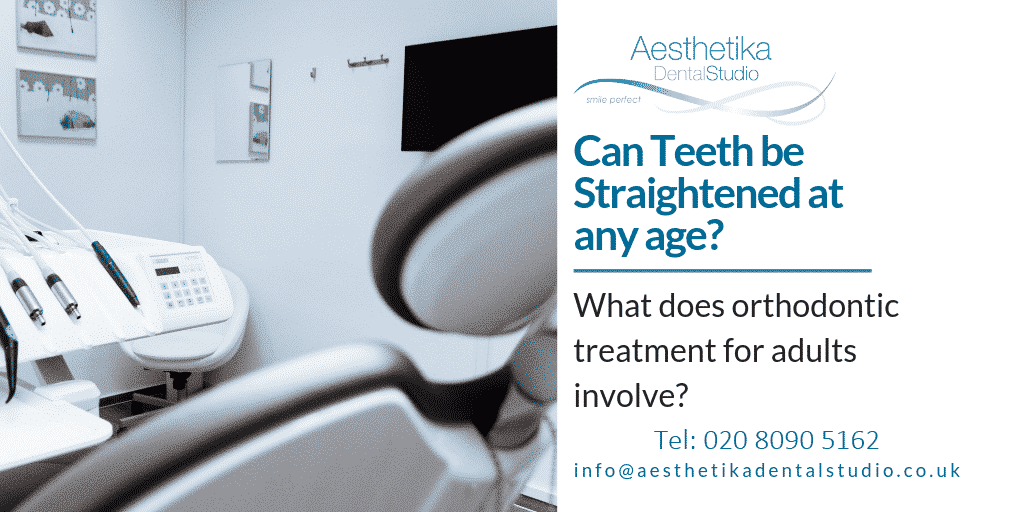Can Teeth Be Straightened At Any Age?
One question that many adults and older people ask when seeking private dental treatment is, can teeth be straightened at any age? A simple answer to this question is yes, adults can have orthodontic treatment to correct the same dental issues that children and teenagers might have. There is no real age limit for braces for teeth.
Adults may need treatment to correct crowding, an overbite or gaps between the teeth. Your private dentist will go through treatment and care options with you, depending on what needs to be done.
Choosing a professional, private dentist to carry out teeth straightening after 50 or braces after 40 will give you peace of mind, quality of care and a range of affordable options.
Why Have Your Teeth Straightened?
Having your teeth straightened will make them more aesthetically pleasing, and it will also make them work better too. Teeth straightening treatment will often involve wearing a removable, or fixed brace to help correct issues like over crowded teeth, or teeth that are crooked. Orthodontic work like this can be performed at any age.
Often, patients will have this form of treatment to correct malocclusion. Put simply, this means your teeth don’t sit together neatly as they are not properly ‘arranged’. Symptoms of malocclusion include:
- Teeth that are overcrowded or have too much space between them.
- A poor bite – for instance if your lower and upper teeth don’t meet when you close your jaw.
- Overbite – this is when your upper teeth cover your lower teeth when your jaw is closed.
Teeth straightening after 50 can improve the positioning of your teeth. This will also make them look and feel better. Crowded teeth can often be more difficult to keep clean, so teeth straightening, and orthodontic treatment can help reduce the risk of tooth decay and gum disease.
What does orthodontic treatment for adults involve?
Although many people have their teeth straightened once all their milk teeth have come out, there are now more adults than ever seeking orthodontic treatment.
Often, treatment to straighten teeth will involve wearing a brace. This can either be fixed, or removeable. A brace works by moving your teeth into the right position, using gentle pressure. Normally, this will be worn all the time and can be in place for anything from a few months to two years.
Every few weeks, you’ll need to see your private Kingston dentist to have the braces checked and adjusted if necessary. However, it’s worth pointing out that everyone’s treatment needs are different and it’s important to discuss all the different options with your dentist.
Your private dentist will carry out a full assessment before any treatment begins. Usually, this takes the form of examining your teeth, taking x-rays and then discussing what the best options to straighten your teeth are. For instance, you might need to have some teeth taken out if there isn’t enough room in your mouth, or you might simply need a brace fitting with no extraction of teeth required.
What are the different types of braces?
Your orthodontist will talk you through treatment options and which type of brace is most suitable for you. A brace will need to be worn all the time. There are some which can be removed for cleaning and eating, whereas others are fixed to the front and back of your teeth.
-
Removable braces
Removable braces are used when teeth crowding is not severe, as they can only move or straighten teeth by ‘tilting’ or ‘tipping’ them.
A removable brace will need to be worn all the time, even at night and when you eat. This can take some getting used to and careful cleaning will be required. You will need to remove your brace to clean it and it’s best to do this when you brush your teeth, twice a day. It should be brushed under running water with a toothbrush and your normal toothpaste. A good private dentist will show you how to do this properly.
2. Aligners
Aligners such as Invisalign or the Inman Aligner are computer-generated moulds that are used to move your teeth into place if your condition is mild, and if you don’t need to have any teeth removed. They are only suitable for people with all their adult teeth, which make them a more ideal treatment for teens and adults.
They are less noticeable, and whilst they need to be worn all the time they can be removed when you eat and drink.
Usually, you’ll need to wear a set of two aligners one for your upper teeth and one for your lower, for roughly a fortnight. These will then be replaced with a new set. This treatment continues until your teeth are in the right position. Your dentist or orthodontist will take bite impressions of your teeth, so that they can produce all the sets you need. They’ll do this using computer technology.
3. Fixed braces
Fixed braces are firmly attached to the surface of your teeth. This means that only your private Kingston orthodontist can remove them. They can be used to move your teeth in a very precise manner.
They consist of small brackets that your dentist will cement together then join with a wire. It’s commonly made of metal, though there are now ceramic versions that aren’t quite as noticeable and may be better suited to adults who want a treatment that is less obtrusive.
Sometimes, you may possible need to have separators between your teeth, and possibly small elastic bands. These will keep the wires in place and move your teeth into the right position.
4. Retainers
Retainers are a type of brace that help stop ‘relapse’ happening. This is when your teeth move back into their original position. How long you will need to wear them for, will depend on your specific needs and it is something you should discuss with your private dentist before and during treatment, as an option.
They can be removeable or fixed. Removable retainers are easy to keep clean, but sometimes it is difficult to remember to wear them in the first place. A fixed retainer needs more attention to keep it clean, but often offers more support to the teeth. It’s always best to discuss your options with your dentist.
Fitting a brace
Having a brace fitted by a professional private dentist shouldn’t hurt. They will talk you through the process and show you how to keep it clean, take it out and put it in correctly.
Treatment length will be dependent on how sever any malocclusion is and the type of brace, or other treatment you need to have.
Once a brace has been fitted there may be some slight discomfort in and around your teeth and gums. This is normal and taking some simple over the counter painkillers such as paracetamol or ibuprofen should help.
Occasionally, there might be some discomfort from the brace rubbing your lips, tongue or the inside of your cheeks. Your orthodontist can give you advice on how to care for this problem.
Choose Aesthetika For Teeth Straightening Whatever Your Age
If you’ve been considering your options for teeth straightening as an adult, then it might be time to contact a professional private dentist who can help and advise on the best course of treatment for you and offer impartial and practical tips to care for your oral health.
Aesthetika can provide all aspects of dental care including cosmetic dentistry if you’re considering teeth straightening. If you’d like an informal chat on this, or for more information on the treatments we can offer, then why not give us a call on 02089367736

















